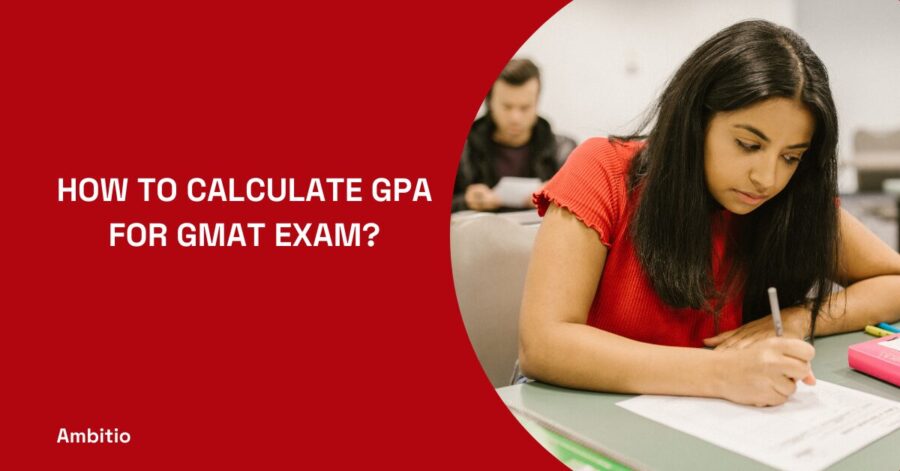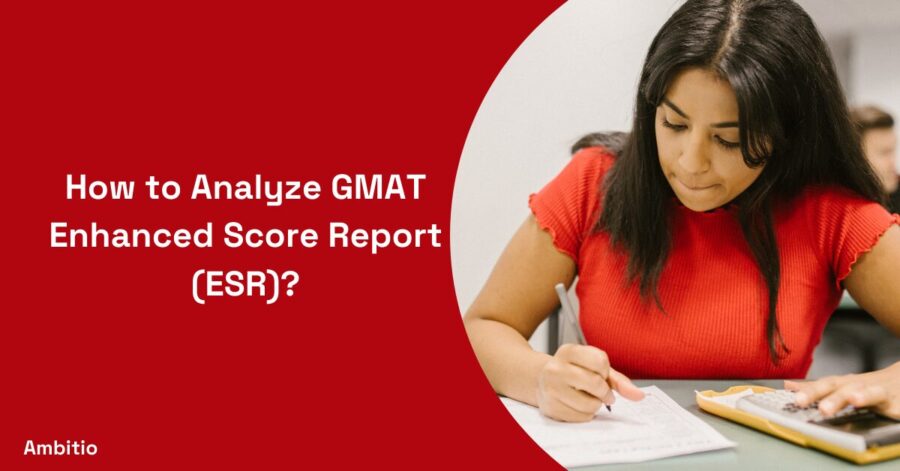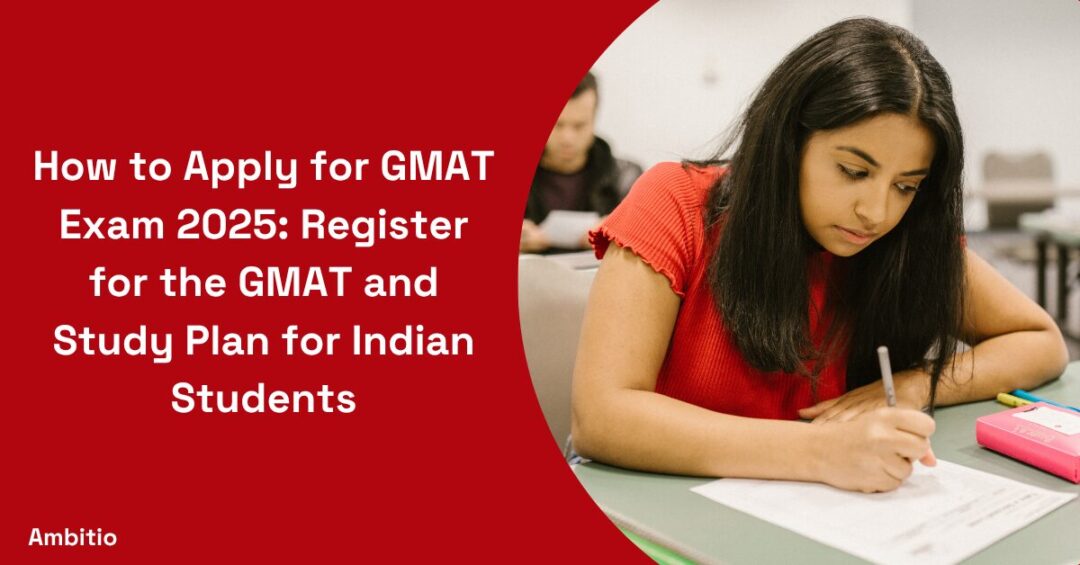11 September 2024
9 minutes read
GMAT Exam Pattern: Section-Wise GMAT Syllabus 2024

Key Takeaways
- The new GMAT Focus Edition streamlines the exam to three 45-minute sections: Quant, Verbal, and Data Insights.
- Adaptive testing remains crucial, adjusting question difficulty based on your performance across all sections.
- Time management is more critical than ever, with each section now equally weighted and timed.
- Start preparing 3-6 months before your test date, focusing on both content mastery and test-taking strategy.
Thinking about taking the GMAT? You might be wondering what’s actually on the test. It’s a common struggle – many candidates aren’t sure where to focus their efforts.
Let’s clear things up. This blog breaks down the 2024 GMAT structure and content, section by section. We’ll cover what to expect and how to approach your prep, so you can study smarter, not harder. Ready to demystify the GMAT? Let’s dive in.
GMAT Pattern 2024

The GMAT exam pattern for 2024 has some key changes. Make sure to manage your GMAT time accordingly. Let’s break down what you need to know for cracking the GMAT exam.
New Structure
The latest GMAT exam now has three main sections instead of four. Quantitative reasoning and verbal reasoning are still there, but they’ve added a new data insights section. This change reflects the evolving skills businesses value. It’s worth noting that the AWA section is now optional and doesn’t count towards your total score. If you want to beat the GMAT, keep this in mind.
Time Management
With the new GMAT exam structure, time management is crucial. The exam pattern comprises shorter sections, but they’re more focused. You’ll need to be efficient, especially in the data insights section. Practice with official GMAT materials to get a feel for the pacing. This is how you secure a good GMAT score.
Integrated Reasoning
The data insights section is a big deal in the new version of the GMAT. It combines elements of critical reasoning and data sufficiency. This section tests your ability to analyze and interpret complex information – a key skill in today’s business world. Don’t overlook this when you prepare to take the GMAT exam. Take a look at GMAT official advanced questions and practice them to master integrated reasoning.
Adaptive Testing
The GMAT test remains adaptive. This means the difficulty of questions changes based on your performance. It’s not just about getting questions right, but tackling challenging ones. This applies to both the quantitative reasoning and verbal reasoning sections. A good GMAT score often comes from consistently answering tougher questions. Practice GMAT question papers thoroughly.
Focus on Fundamentals
Despite the changes, the core of the GMAT exam consists of testing fundamental skills. Whether it’s GMAT quant or verbal, the basics still matter. The new pattern of the GMAT might look different, but it still covers key areas like critical thinking, problem-solving, and communication. As you prepare, make sure you have a solid grasp of these fundamentals. If you get an impressive score, you can stand a chance to get GMAT scholarships as well,
GMAT Focus Edition Exam Pattern 2024
he GMAT Focus Edition is the current version of the GMAT exam. It’s a bit different from what you might be used to, so let’s break it down.
Structure: Unlike the old four section of GMAT, this version of the GMAT exam has three main parts:
- Quantitative Reasoning (45 minutes)
- Verbal Reasoning (45 minutes)
- Data Insights (45 minutes)
Total time: 2 hours and 15 minutes. Yep, it’s shorter now.
What’s New: The big change is the Data Insights section. It replaces the old Integrated Reasoning and AWA sections. This part tests how well you can analyze data and draw conclusions – pretty useful for business, right?
Scoring: Your score on the GMAT Focus Edition ranges from 205 to 805, in 10-point steps. You’ll get scores for each section, plus an overall score.
Key Points:
- It’s adaptive, meaning questions get harder or easier based on how you’re doing.
- No separate essay section anymore.
- Each section of the GMAT is equally weighted now.
To cover the GMAT Focus Edition well and appear for the GMAT exam, focus on:
- Math skills for Quant
- Reading and critical thinking for Verbal
- Data analysis for the new Insights section
Time management is crucial since each section is the same length.
Remember, this is the exam you’ll appear for if you take the GMAT now. It’s designed to test skills that matter in today’s business world. Use official GMAT prep materials to get ready, and you’ll be set to tackle this new version head-on.
GMAT Exam Pattern: Quantitative Reasoning Section

Let’s break down the Quantitative Reasoning section of the new GMAT. This part tests your math skills, but don’t worry – it’s not about complex calculations.
Time and Questions:
You get 45 minutes for this section. Expect about 20-25 questions. That’s roughly 2 minutes per question, so pace yourself. GMAT preparation time varies for people, but you should start early to cover all the portions effectively.
Question Types:
Problem Solving: These are straightforward math questions. You’ll see topics like algebra, geometry, and arithmetic.
Data Sufficiency: Here’s where the GMAT gets tricky. You’re given a question and two statements. Your job is to decide if you have enough info to answer. This is why you have to be careful when it comes to GMAT order selection.
Topics Covered
Basic math operations
Percentages and ratios
Probability and statistics
Geometry and algebra
Scoring:
Your performance here affects your overall GMAT score. It’s scored from 6 to 51, in 1-point increments.
Tips:
Practice mental math. You can’t use a calculator.
Focus on strategy, not just calculations.
For Data Sufficiency, learn to identify what information you need.
Key Points:
This section adapts to your skill level. Questions get harder if you’re doing well.
Many questions have a business context. You might calculate profits or analyze market data.
It’s one-third of your score, so it’s crucial for your GMAT pattern 2024 performance.
Remember, the latest GMAT exam pattern emphasizes practical skills. It’s not about complex math, but how you apply basic concepts to solve problems. This reflects the kind of thinking you’ll need in business school and beyond. Also, be careful while booking your slot for GMAT because the GMAT reschedule fee might be levied.
GMAT Exam Pattern: Verbal Reasoning Section
The Verbal Reasoning section is a key part of the GMAT questions. If you’re planning to take the GMAT, you’ll want to understand this section well. It tests your language skills in ways that matter for business.
Time and Questions: You get 45 minutes for about 20-25 questions. That’s about 2 minutes per question, so you’ll need to be efficient.
Question Types:
- Reading Comprehension: You’ll read passages and answer questions about them.
- Critical Reasoning: These questions test your ability to analyze and evaluate arguments.
- Sentence Correction: You’ll need to choose the best way to phrase a sentence.
What It Tests:
- Your ability to understand complex texts
- How well you can spot logical flaws in arguments
- Your grasp of English grammar and style
Scoring: Scores range from 6 to 51, in 1-point steps. Your performance here contributes to your overall GMAT score.
Tips:
- Practice active reading for the comprehension questions
- Learn to identify argument structures for critical reasoning
- Brush up on grammar rules for sentence correction
Key Points:
- Questions adapt to your performance, getting harder if you do well
- Many GMAT Club members find this section challenging, so don’t worry if you do too
- The syllabus includes business-related content, so you’re also learning useful context
Remember, while the GMAT exam consists of four main parts in total, this verbal section is crucial. Start your preparation with the official GMAT materials to get a feel for the question types. Have a clear idea of the number of questions in GMAT. The GMAT exam pattern consists of these verbal questions for good reason – they test skills you’ll need in business school and beyond. This is also how you can score over 750 in GMAT.
GMAT Exam Pattern: Data Insights
The Data Insights section is new to the GMAT Focus Edition pattern. GMAT for non-math background can be a bit challenging, so understand your pain points and give extra emphasis there. It’s designed to test your ability to analyze and interpret complex information. Here’s what you need to know:
Time and Questions: 45 minutes for about 20 questions. You’ll need to work efficiently.
What It Tests:
- Interpreting data from graphs, charts, and tables
- Drawing conclusions from multiple sources
- Identifying relevant information for business decisions
Question Types:
- Multi-source reasoning
- Table analysis
- Graphics interpretation
- Two-part analysis
Key Points:
- This new section on the GMAT replaces the old Integrated Reasoning and AWA sections
- It’s more focused on practical business analysis skills
- You’ll need to synthesize information quickly
Tips:
- Practice reading graphs and tables quickly
- Work on identifying key data points
- Develop strategies for comparing information from different sources
Scoring: Like other sections, it’s scored from 6 to 51 in 1-point increments.
The updated GMAT syllabus consists of this section to better reflect real-world business challenges. As you complete your GMAT prep, pay special attention to this part. The GMAT Focus Edition introduced this change to make the test more relevant to today’s business world. You need to understand the purpose of the GMAT exam as well as the importance of the GMAT test to completely appreciate its impact.
Remember, this version of the GMAT is relatively new. Use official materials to familiarize yourself with the question types. The syllabus for the GMAT now emphasizes these data analysis skills, so they’re crucial for your success. Choose the right GMAT books for the prep as well.
GMAT Test is Computer Adaptive
The GMAT is a computer-adaptive test. This means the difficulty of questions changes based on how you’re doing. It’s a key feature you should understand before you apply for GMAT.
How it works:
- The test starts with medium-difficulty questions
- Answer correctly, you get harder questions. Miss one, you get easier ones
- This happens in real-time as you take the exam
Why it matters:
- It provides a more accurate assessment of your skills
- You can’t skip questions or go back – each answer counts
- The difficulty of your questions affects your score
Sections affected:
- Quantitative Reasoning
- Verbal Reasoning
- Data Insights (in the new GMAT Focus Edition)
Tips for adapting:
- Don’t panic if you get a tough question – it might mean you’re doing well
- Focus on accuracy, especially early in each section
- Manage your time carefully – don’t get stuck on any one question
Preparation strategies:
- Use adaptive practice tests to get used to the format
- Review the GMAT Official Guide for authentic question types
- Pay attention to the GMAT critical reasoning syllabus and GMAT reading comprehension – these are key areas
Remember, the questions in the GMAT aren’t just testing knowledge, but also your ability to think under pressure. In addition to the GMAT’s content, you’re being evaluated on how you handle this adaptive format.
As you prepare for the exam, practice with timed, adaptive tests. This will help you get comfortable with the changing difficulty levels and improve your performance on test day.
When to start preparing for GMAT/GRE?
Timing your GMAT prep right is crucial. You can start with a GMAT beginner’s guide for the [rocess. Let’s talk about when to start and how to plan your study schedule.
Ideal timeline:
- Start 3-6 months before your target test date
- This gives you enough time to cover all GMAT sections thoroughly
- It also allows for practice tests and review
Factors to consider:
- Your current knowledge level
- Available study time per week
- Target score
- Application deadlines
Study plan basics:
- Begin with a diagnostic test to assess your starting point
- Use official GMAT study materials for authentic practice
- Focus on weaker areas, but don’t neglect strengths
- Take practice tests regularly to track progress
Key points:
- The exam evaluates various skills, so give yourself time to improve
- GMAT consists of different question types – familiarize yourself with all
- If you’re taking the new version, remember it introduced the GMAT Focus Edition
- Plan to complete your GMAT prep before application season heats up
Tips:
- Start with content review, then move to practice questions
- Gradually increase the difficulty of GMAT questions you tackle
- Simulate test conditions, including timed practice
- Leave time for a final review before the exam begins
Remember, in addition to the GMAT content, you’re also preparing for the test-taking experience. The current exam format, including the adaptive nature, requires strategic thinking.
Whether you’re retaking after a previous GMAT attempt or starting fresh, give yourself enough time. A well-paced study plan will help you approach the test with confidence.
Conclusion
Wrapping up, remember that the GMAT is more than just a test – it’s a key step in your business school journey. The new Focus Edition brings changes, but the core remains: assessing your readiness for MBA challenges. Start prep early, use official materials, and practice smart. Understand the exam’s adaptive nature and each section’s demands. With solid preparation and the right mindset, you’ll be well-equipped to tackle the GMAT and move confidently towards your MBA goals. Good luck!
Elevate your GMAT performance to new heights with Ambitio’s advanced preparation platform. Our holistic approach to GMAT prep ensures you have the knowledge, skills, and strategy to excel on every section of the exam, propelling you toward your target business school with confidence.
FAQs
How important is time management in the new GMAT format?
Time management is crucial in the new GMAT format. With each section now 45 minutes long and equally weighted, you need to be efficient in all areas. Practice with timed sections and full-length tests to improve your pacing and ensure you can complete all questions within the allotted time.
Can I use a calculator during the Quantitative Reasoning section?
No, you cannot use a calculator during the Quantitative Reasoning section. It’s important to practice mental math and focus on problem-solving strategies rather than complex calculations.
How long should I prepare for the GMAT?
It’s recommended to start preparing 3-6 months before your target test date. This timeline allows you to thoroughly cover all GMAT sections, take practice tests, and review your progress. The exact duration may vary based on your current knowledge level and target score.
Is the GMAT still computer-adaptive?
Yes, the GMAT remains a computer-adaptive test. This means the difficulty of questions changes based on your performance throughout the exam. The adaptive nature applies to all three sections: Quantitative Reasoning, Verbal Reasoning, and Data Insights.
What is the new Data Insights section?
The Data Insights section replaces the old Integrated Reasoning and AWA sections. It tests your ability to analyze and interpret complex information from multiple sources, including graphs, charts, and tables. This section reflects the skills valued in today’s business world.
How is the GMAT Focus Edition scored?
The GMAT Focus Edition is scored on a scale of 205 to 805, in 10-point increments. You’ll receive individual scores for each section as well as an overall score. All three sections are equally weighted.
What are the main changes in the GMAT Focus Edition?
The GMAT Focus Edition has three main sections instead of four: Quantitative Reasoning, Verbal Reasoning, and Data Insights. Each section is 45 minutes long, and the total exam time is 2 hours and 15 minutes. The AWA section is now optional and doesn’t count towards the total score.

You can study at top universities worldwide!
Get expert tips and tricks to get into top universities with a free expert session.
Book Your Free 30-Minute Session Now! Book a call now




























